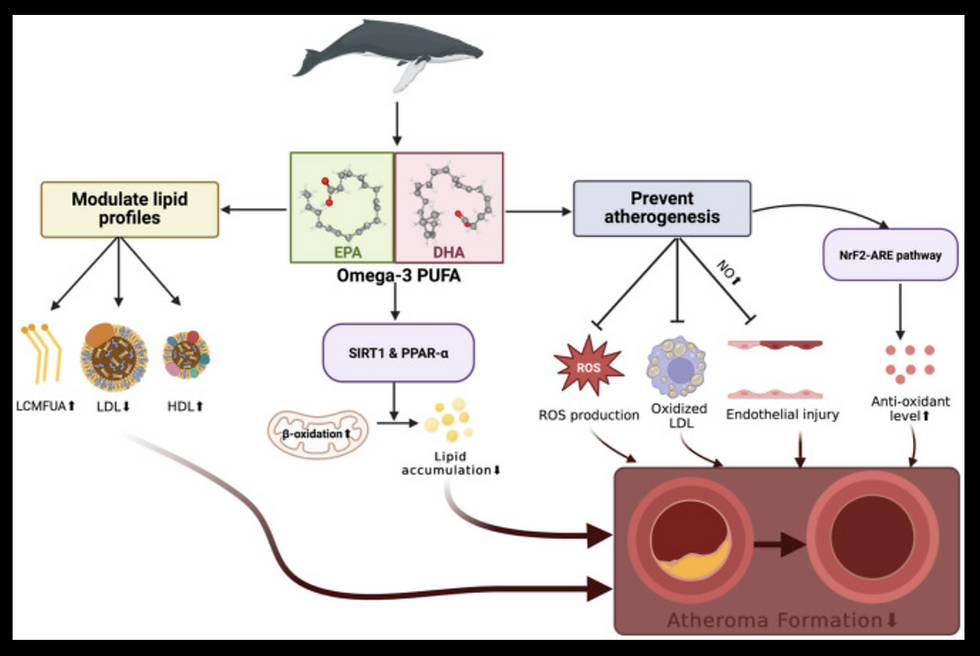Guardians of the sea: molecular and biochemical adaptations in sharks and whales for atherosclerosis resistance and their potential in human cardioprotection
- heartlung
- Jul 30
- 1 min read
Raymond Rubianto Tjandrawinata, Isabela Caiado Caixeta Vencio, Axel Brahmantyo Maynardo Nugroho Jonathan Hartanto, Nicolas Daniel Widjanarko , Fahrul Nurkolis
Diabetol Metab Syndr.2025 Jul 25;17(1):293.
Abstract
This review explores unique molecular and biochemical adaptations in sharks and whales that confer resistance to atherosclerosis despite high lipid concentrations, unlike atherosclerosis-prone terrestrial mammals (e.g., humans, primates) and shorter-lived marine species (e.g., seals, dolphins). Central to our hypothesis is that sharks and whales evolved unique lipid quality management, specialized peptide systems, and genomic expansions beyond ubiquitous marine omega-3 polyunsaturated fatty acids (PUFAs) to prevent plaque formation. Comparative lipidomics highlights marine-specific profiles rich in anti-inflammatory omega-3 PUFAs, contributing to vascular protection and plaque prevention. Sharks demonstrate potent anti-angiogenic peptides and aminosterols (e.g., squalamine, trodusquemine) that modulate key pathways like PTP1B inhibition, thus reducing inflammation and endothelial dysfunction. Whales exhibit specialized lipid metabolites in blubber, including esterified omega-3 PUFAs, enhancing antioxidant enzyme activity and endothelial nitric oxide production, crucial for maintaining vascular health. Genomic insights further reveal expanded antioxidant gene families in whales, highlighting potential translational strategies to human cardiovascular therapies. Future therapeutic strategies must resolve challenges in ethical sourcing, bioavailability, and scalability. CLINICAL TRIAL NUMBER: Not applicable.
Keywords: Aminosterols; Antioxidant enzymes; Atherosclerosis; Cardioprotection; Lipidomics; Marine biology; Omega-3 PUFAs; Shark cartilage peptides.
© 2025. The Author(s).





Comments